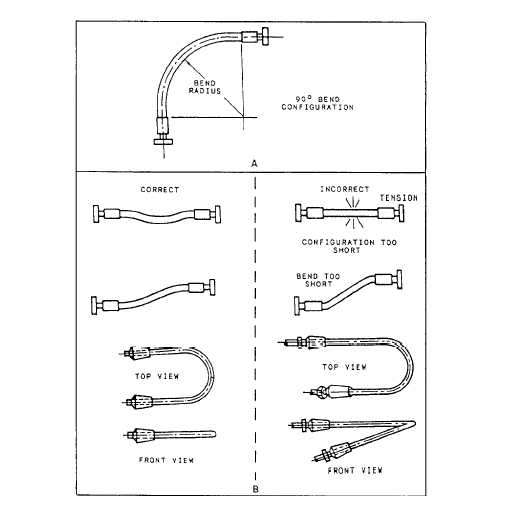Steel piping and tubing are relatively in-
expensive, have a high tensile strength, are suitable
for bending and flanging, and are very adaptable
to high pressures and temperatures. Its chief
disadvantage is a comparatively low resistance to
corrosion.
Copper and brass piping and tubing have a
high resistance to corrosion and are easily drawn
or bent. Pipe or tubing made from these materials
is unsuitable for systems with high temperatures,
stress, or vibration because they have a tendency
to harden and break.
Aluminum has many characteristics and
qualities required for fluid systems. It has a high
resistance to corrosion, is lightweight, is easily
drawn or bent, and (when combined with certain
alloys) will withstand high pressures and
temperatures.
Stainless steel piping or tubing is relatively
lightweight and is used in a system that will be
exposed to abrasion, high pressure, and intense
heat. Its main disadvantage is high cost.
FLEXIBLE HOSE ASSEMBLIES
The flexible hose assembly is a specific type
of flexible device that uses reinforced rubber hose
and metal end fittings. It is used to absorb
motions between resiliently mounted machinery
and fixed or resiliently mounted piping systems.
The motions to be considered may be of either
relatively large size due to high-impact shock or
of smaller size due to the vibratory forces of
rotating machinery. The configuration selected
must contain enough hose to accommodate shock
and vibratory motions without stressing the hose
assembly or machinery to an unacceptable degree.
Approved Flexible Hose Configurations
The arrangements (or configurations) deter-
mined to give the best noise attenuation character-
istics and to accommodate the motions of
resiliently mounted equipment are shown in
figures 9-50 and 9-51. The 90° “L” configuration
Figure 9-51.—Other approved single hose length configurations.
9-33

